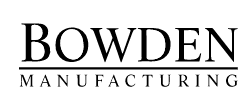Managing Your Supply Chain for Success
Part 2a of 10
Pricing Negotiations Don’t Have to Be Uncomfortable!
Managing Your Supply Chain for Success Series (Part 2a of 10)
We continue our Managing Your Supply Chain Series and our next topic is Pricing Negotiations!
This is such a big topic that we’re going to use two blogs to cover it. Many folks are not comfortable talking about money, but it doesn’t have to be such a big challenge.
Since we are both a Vendor to some companies and a Customer to others, we deal with both sides of this equation.
This week, we’ll start out with five questions for you to consider around Vendor Pricing:
1. Do you take the time to talk through projects with potential Vendors, so they understand the scope of what you need in detail?
It is much easier for your vendor to give you an accurate price if you provide clear expectations. Rather than assuming “they should know” what you want, you can have a more thorough discussion around the details. Giving your Vendors the chance to review all the specifics of the job with you can help them properly determine their best, most cost-effective way of doing the job. This will also help them see how well you can work with them once they get an order from you.
2. Do you know what are the Cost Drivers are for your Vendors?
Too often, because you are uncomfortable talking about costs, your Vendors will simply provide you a final price for your RFQ. Typically, the only time a discussion starts about Cost Drivers is when the price you get back is too high. Instead, prompt an early, open discussion about the main influences on the cost of their parts, even if you’re just laying out your expectations (i.e. material, particularly difficult design features, special tooling, etc.). If you can engage your Vendor in this more detailed way, you will get a better appreciation for the price they are providing, and you can help them offer the best value to you. This is especially true if you have design control of the product and could make adjustments that would help your Vendor. Having a transparent conversation with your Vendor about their costs and how you can help the parts flow more smoothly through their shop will help them provide you better service and value.
3. Have you considered the “extras” that your best Vendors provide (i.e. packaging, communications, reporting, etc.) and do you review your desire for those same “extras” from new Vendors during the quoting process?
You may tend to take these extras for granted, but there is a value to you when they are performed well. When items are properly packaged with correct paperwork, it’s easier for your Team to receive and use the parts. Receiving consistent communications regarding your order makes your life easier. Understanding how a new Vendor thinks about these “extras” is an opportunity to ensure that new Vendors start out along the same lines as your current best Vendors.
4. If there are times when you’re buying a commodity-type of product and the price is overwhelmingly the biggest driver, do you let potential Vendors know that when that’s the situation?
Where does price fall on your list of buying criteria? If it’s #1, then perhaps this question doesn’t matter to you. Hopefully, however, you’re looking for the best value, not just the best price, when you’re seeking a Vendor for your parts. The more difficult the project, the more likely it is that price shouldn’t be the biggest decision-making driver. But when price is the most important factor, letting your potential Vendors know that’s the case will help you get what you’re looking for more often.
5. Do you encourage your Vendors to look for alternatives to your design that might reduce the overall cost of your project?
Being open to allowing your Vendors to add some of their expertise to the design of your project can help reduce some of your costs. Discussing critical aspects of your design can allow Vendors to suggest ways that the parts can be produced more economically. Every shop is different and playing to the strengths of your Vendors can help your products flow smoothly for them. Having design flexibility based on the manufacturing methods of your Vendors can improve the overall value of your project.
Final Thoughts
Hopefully, these five questions started to challenge your thinking in regard to talking pricing with your Vendors, maximizing the value you receive from the parts they provide. Your openness to talk in detail about your projects, understanding Vendor cost drivers, considering any of the “extras” they might provide, identifying your most important considerations when buying, and getting your Vendors’ input when possible can help grow your Vendors into solid Partners.
In part two of our Pricing Negotiations blog, we’ll close out this topic with four more questions to consider around Vendor pricing discussions.

